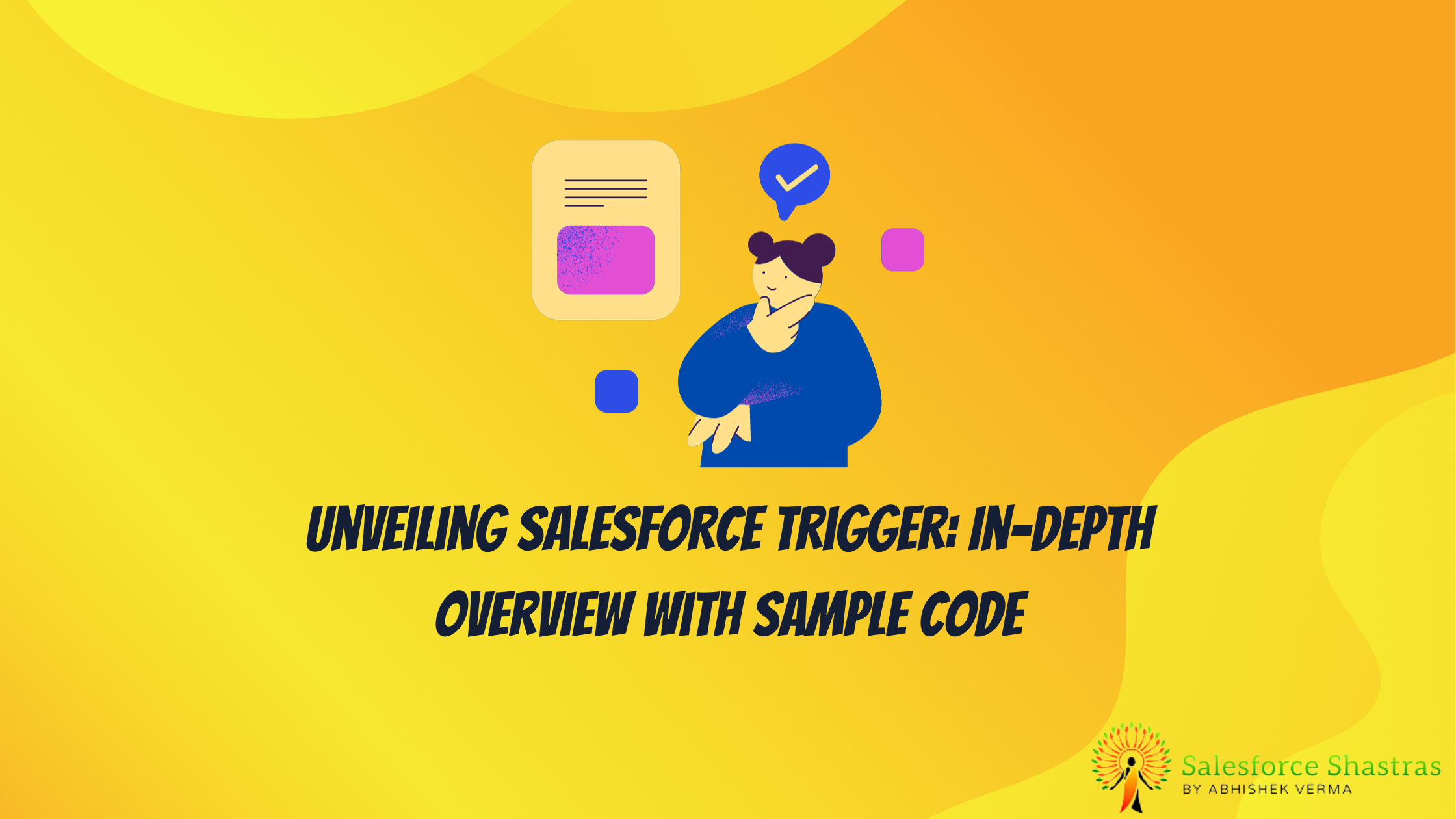Hello there! If you are a student aspiring to step into the world of Salesforce, or if you are just curious about the Salesforce Trigger, this blog is dedicated to helping you understand Salesforce triggers in a detailed yet simplified manner. So, let’s dive right in and learn together!
Defining a Salesforce Trigger
Salesforce triggers are powerful tools that automate actions when certain changes occur within Salesforce records. They are essentially lines of Apex code that run whenever a specific event, such as modifying or creating a record, takes place.
The magic of triggers lies in their ability to execute both before and after the record is altered. So, “before triggers” can be used to validate or update record values before they are permanently stored, while “after triggers” come in handy for accessing field values set by the system and generating follow-up actions.
In sum, Salesforce Triggers enable you to;
- Automate record modifications
- Enforce validation and business rules
- Build more complex business logic than what’s achievable with workflow rules.
Understanding The Syntax of Salesforce Triggers
The syntax of a Salesforce trigger comes with a few straightforward rules. Here’s a simple version:
trigger TriggerName on ObjectName (trigger_events) {
//Apex code here
}Let’s take a moment to dissect this.
TriggerNameis your chosen name for the trigger.ObjectNamerepresents the name of the standard or custom object that the trigger will act on.trigger_eventsrefers to the specific occasions when the trigger will fire.
A trigger event could be one or more of the following: before insert, after insert, before update, after update, before delete, after delete and after undelete.
For instance, see below for a sample Salesforce trigger on an Account object:
trigger UpdateAccount on Account (before update) {
for(Account a : Trigger.new){
//Your Apex code here
}
}##Working Example of a Salesforce Trigger
Let’s use an illustrious example of a Salesforce trigger that automatically updates a custom field on the Account object called ‘Number_of_Contacts__c’ which counts the number of contact records related to that Account.
trigger CountContacts on Contact (after insert, after delete, after undelete) {
//Generate a set of parent Account IDs
Set<Id> parentIds = new Set<Id>();
if(Trigger.isInsert || Trigger.isUndelete) {
for(Contact con : Trigger.new) {
parentIds.add(con.AccountId);
}
}
if(Trigger.isDelete) {
for(Contact con : Trigger.old) {
parentIds.add(con.AccountId);
}
}
//For each Account, count the number of Contacts and update the custom field
List<Account> accsToUpdate = [SELECT Id, Number_of_Contacts__c,
(SELECT Id FROM Contacts)
FROM Account WHERE Id IN :parentIds];
for(Account acc : accsToUpdate) {
acc.Number_of_Contacts__c = acc.Contacts.size();
}
update accsToUpdate;
}This trigger assumes the role after an insertion, deletion, or undeletion of a contact record. It goes through all related Account records and updates the ‘Number_of_Contacts__c’ field.
Dealing With Salesforce Trigger Best Practices
Lastly, I would be remiss if I did not mention some best practices to bear in mind while working with Salesforce triggers. Here are a few pointers to get you started:
- Keep your trigger logic minimal.
- If possible, delegate operations to helper classes.
- Make use of collections such as lists or maps to handle bulk data, thus optimizing trigger performance.
- Always consider order of execution and remember that triggers could be called recursively.
- One trigger per object is recommended. So, combine multiple events like before insert, after insert, before update in one trigger.
Conclusion
In conclusion, mastering Salesforce triggers paves the way for you to perform wonderfully automated tasks in Salesforce, thus redefining how you interact with data on this platform. Embrace triggers, they do help us address complex business requirements. But remember, with great power comes great responsibility – wield your new tool wisely!
Hopefully, this writing has given you a deeper understanding of Salesforce triggers with a real-world example to guide you. Don’t hasten the process. Let the knowledge seep in. Happy learning!
Remember to keep the above-mentioned best practices while writing your own Salesforce triggers. The nuanced understanding of these tips will come with continuous practice and application. Keep going!




2 thoughts on “Salesforce Trigger: In-depth Overview with Sample Code”